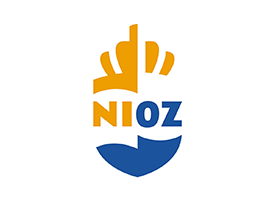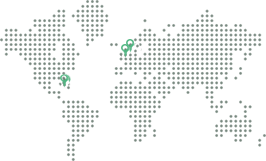PARTNERS

The Royal Netherlands Institute for Sea Research is the national oceanographic institute of the Netherlands and part of the Netherlands Organization for Scientific Research (NWO). It has two divisions, one located on the island of Texel and one in Yerseke. The institute employs around 300 permanent and temporary staff. The mission of NIOZ is to acquire and communicate scientific knowledge on seas and oceans for the understanding and sustainability of our planet, and to facilitate and support marine research and education in the Netherlands and Europe. Apart from conducting fundamental research in the main fields of marine sciences, pioneering applied research is one of NIOZ’s upcoming activities. In order to fulfil its mission, the institute performs tasks in three specific fields: research with an emphasis on innovative, multidisciplinary, and independent fundamental research in shallow coastal seas and open oceans; education – the institute trains PhD and other students at universities and schools for professional education; facilities – NIOZ operates the ocean-going RV Pelagia as well as smaller vessels for coastal research, and manages laboratories and a large pool of marine research equipment, often designed and built by the institute’s own technical department. NIOZ’s mechanical and electrical engineering department supports scientific missions, but more importantly, it is dedicated to the development of new equipment and the improvement and maintenance of existing equipment. Projects carried out at NIOZ include the development of stationary bottom landers (such as ALBEX, BoBo), crawlers (MOVE) and innovative mooring designs, like the thermistor string mooring and the current KM3Net moorings (neutrino telescope in the deep sea). NIOZ has a track record of successful long-term lander and mooring operations in the Atlantic and Indian Oceans, going down to depths of 6000 metres. Furthermore, an HD camera system (including normal and infrared light) has been developed in the last few years that can also be used as a tethered system on autonomous landers or crawlers. Test facilities such as a hyperbaric pressure tank and a test basin are available at the institute.
The NIOZ Seaweed Centre (https://www.nioz.nl/en/expertise/seaweed-research-centre ) consists of 20-30 cultivation tanks with volumes of 1500 litres each. These tanks are specially designed for conducting seaweed research under fully controlled conditions. Aeration is used to create turbulent conditions in the tanks, which keeps the seaweed in the tanks in constant motion. The tanks are fully insulated and are heated and cooled using geothermal heat. This guarantees that the Seaweed Centre’s minimal energy requirement will be satisfied, and that service will be available 365 days a year. Filtered seawater from the Marsdiep and compressed air are supplied by a central pipe. Lids are used to control the light in the tanks. The water that comes out of the tanks is cleaned using a biological seaweed filter (three large concrete bins containing sea lettuce, Ulva lactuca) before it is pumped back into the Marsdiep.
In the tanks, experiments are performed with species such as Saccharina latissima, Laminaria digitata, Palmaria palmata and Ulva lactuca, studying for example the environmental control of life cycles, nutrient uptake rates, growth, grazing, etc. In addition to the incubation tanks, ample climate rooms are available for smaller scale experiments under fully controlled temperature and light conditions.
In the NIOZ analytical laboratories, all of the state-of-the-art equipment is available for measurements of inorganic nutrients and the cellular composition of marine organisms such as seaweed. Routine measurements are available on total soluable proteins, amino acids, growth, photo pigments and so on in seaweed.

